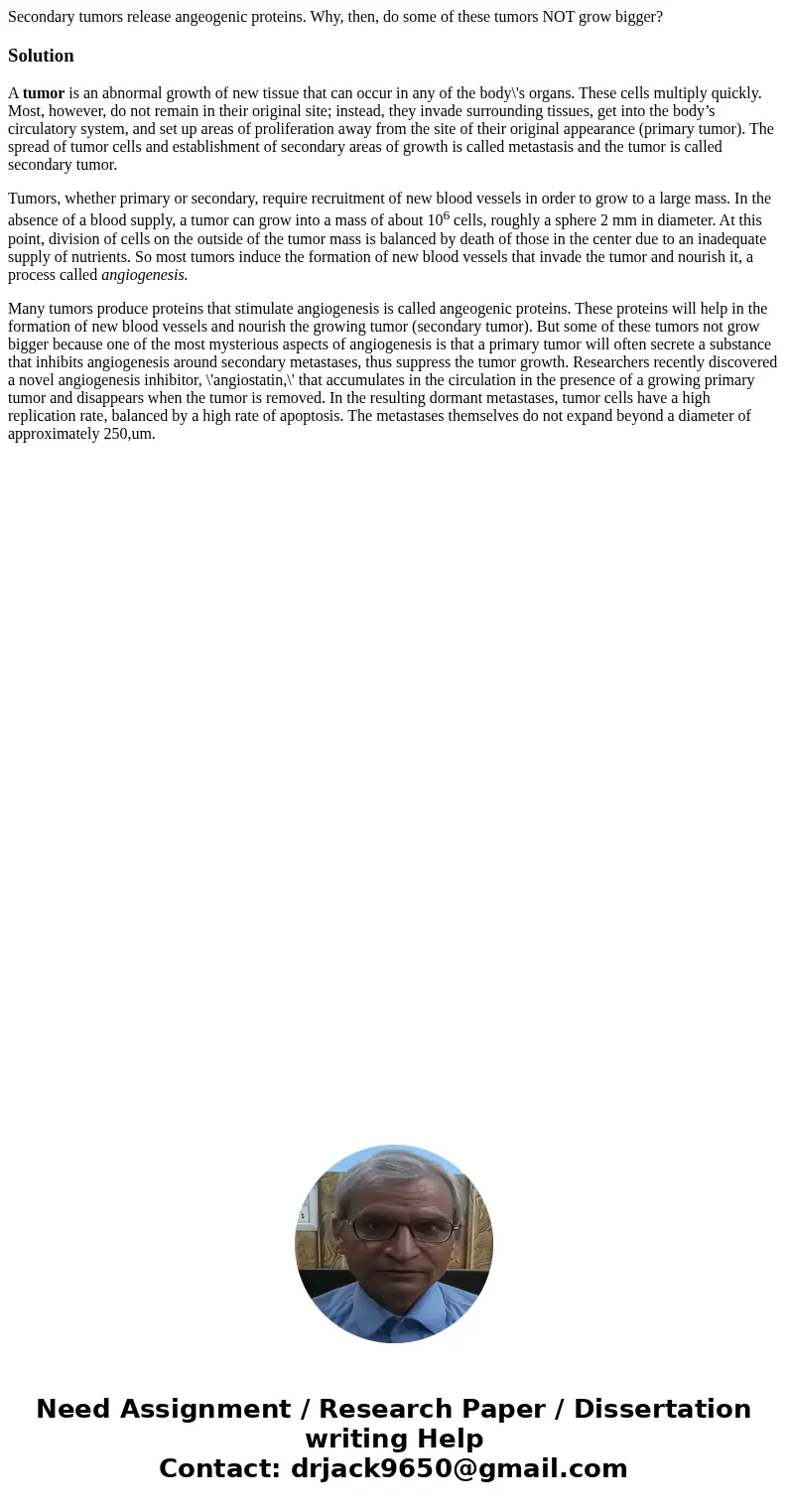Secondary tumors release angeogenic proteins Why then do som
Secondary tumors release angeogenic proteins. Why, then, do some of these tumors NOT grow bigger?
Solution
A tumor is an abnormal growth of new tissue that can occur in any of the body\'s organs. These cells multiply quickly. Most, however, do not remain in their original site; instead, they invade surrounding tissues, get into the body’s circulatory system, and set up areas of proliferation away from the site of their original appearance (primary tumor). The spread of tumor cells and establishment of secondary areas of growth is called metastasis and the tumor is called secondary tumor.
Tumors, whether primary or secondary, require recruitment of new blood vessels in order to grow to a large mass. In the absence of a blood supply, a tumor can grow into a mass of about 106 cells, roughly a sphere 2 mm in diameter. At this point, division of cells on the outside of the tumor mass is balanced by death of those in the center due to an inadequate supply of nutrients. So most tumors induce the formation of new blood vessels that invade the tumor and nourish it, a process called angiogenesis.
Many tumors produce proteins that stimulate angiogenesis is called angeogenic proteins. These proteins will help in the formation of new blood vessels and nourish the growing tumor (secondary tumor). But some of these tumors not grow bigger because one of the most mysterious aspects of angiogenesis is that a primary tumor will often secrete a substance that inhibits angiogenesis around secondary metastases, thus suppress the tumor growth. Researchers recently discovered a novel angiogenesis inhibitor, \'angiostatin,\' that accumulates in the circulation in the presence of a growing primary tumor and disappears when the tumor is removed. In the resulting dormant metastases, tumor cells have a high replication rate, balanced by a high rate of apoptosis. The metastases themselves do not expand beyond a diameter of approximately 250,um.

 Homework Sourse
Homework Sourse